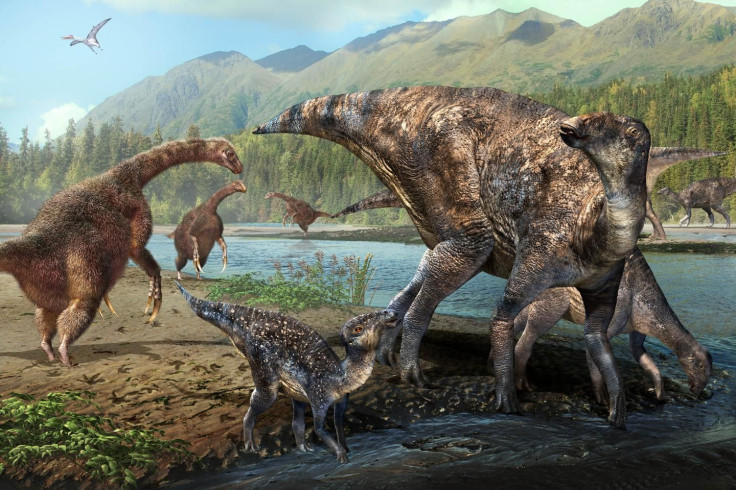Dinosaurs Used Alaska As 'Superhighway' Migration Route To North America, Footprints Suggest

A group of paleontologists has made a remarkable discovery in Alaska, one that suggests the most sparsely populated state in the United States once served as a “superhighway” for different animal species.
Scientists have long been theorizing that animals living 70 to 65 million years ago migrated between Asia and North America using a land bridge. The gateway, according to these scientists, enabled the coexistence of different dinosaur species.
Though there is hardly any evidence to confirm this theory, a group of researchers recently added more support for the idea by discovering co-occurring footprints of two late Cretaceous-era dinosaurs — hadrosaur and therizinosaur.
According to the fossil record, hadrosaurs were herbivorous dinosaurs that lived in different parts of the world including Asia and North America. They were common among different dinosaur groups but became particularly popular due to the flat, duck bill-like structure of their snout bones.
Meanwhile, therizinosaurs lived as extremely rare and strange looking creatures. They had long, skinny necks, big torsos, and super-long claws, but very tiny teeth and beaks. The unusual physical traits led many to think the animal was probably a predator that evolved to be an herbivore.
Though separate fossil records suggest both these dinosaurs lived in Asia and North America, scientists believe therizinosaurs were particularly active in Asia. More importantly, Mongolia is the only place where fossil evidence of their co-existence has been found.
However, the fact changed when an international team of paleontologists and geoscientists located the footprints of the two species at a Denali National Park formation in Alaska. This is the first evidence of co-occurring hadrosaur and therizinosaur tracks in Alaska.
Located side-by-side, the tracks, which were uncovered between 2012 and 2014, suggested the species collectively moved from Asia to western North Alaska via Alaska, which served as a gateway or “superhighway.”
"Hadrosaurs are very common and found all over Denali National Park. Previously, they had not been found alongside therizinosaurs in Denali,” Anthony R. Fiorillo, the lead author of the study, said in a statement. “In Mongolia, where therizinosaurs are best known - though no footprints have been found in [the] association - skeletons of hadrosaurs and therizinosaurs have been found to co-occur from a single rock unit so this was a highly unusual find in Alaska, and it prompted my interest. From our research, we've determined that this track association of therizinosaurs and hadrosaurs is currently the only one of its kind in North America."
After analyzing the site of discovery, the researchers posited the region was wet and marshy back in the day and had conditions which the dinosaurs in question probably liked. They believe discoveries like this could reveal more about how different dinosaur species lived, interacted, and migrated before going extinct.
The study titled, "An unusual association of hadrosaur and therizinosaur tracks within Late Cretaceous rocks of Denali National Park, Alaska," was published in the journal Scientific Reports.
© Copyright IBTimes 2024. All rights reserved.





















